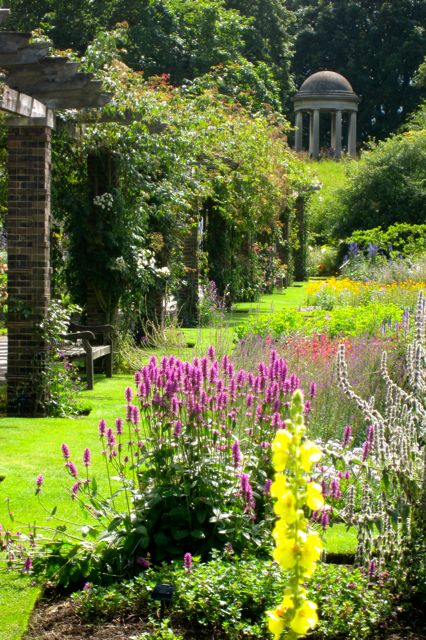
It was common in British gardens to set a small temple off in the distance from a manor house as a way to draw the eye past the flowers to a heavy, established place of order, human establishment and spiritual opportunity. This is part of our penchant for building massive churches. Not dissimilar to the fake medieval castle ruins (called a “folly) set into a distant view from a dining room as a way to symbolize an ancient family heritage which did not in fact exist, these garden temples often were symbols of a spirituality which was rather more a goal or hope or a deception than a reality.
There are five great gardens in scripture: Eden, The Song of Songs, Gethsemene, the Resurrection garden and the Revelation garden. In each, something stunning happens to humanity. In Eden we are created and the cosmic tension in the novel is set. In the Song of Songs the nature of various kinds of love are explored. In Gethsemene various kinds of fear are explored. In the Resurrection garden Mary turns twice (once physically and once internally) and begins to model a new way of spiritual turnings and in Revelation the garden is cosmic and timeless, breaking down our constructs and un-nerving us a bit.
I think it is hard to overestimate how tired we Americans are and how much we need gardens. The work (physical and psychic) that it takes to maintain the preposterous and disgraceful standards of living we think we deserve takes a high toll. Children are enrolled in soccer and told to win and in Japanese classes and told to succeed – in elementary school, where play and stillness are increasingly absent in exchange for success and preschool resume-building. Clergy race around setting up programs while the people wonder if we will slow down enough to remember their names or take a moment to get to know them and ourselves through them. Parents work so hard to occupy their over-stimulated children that their love-life wizens and dies leaving a 6-% rate of divorce and children wounded for life and often unable to maintain long relationships in adulthood.
When I look at this image of the temple in the garden, I am reminded that along with water and food, touch and kindness, we need some stillness in order to survive and thrive. Children need it to notice things. Parents need it to rekindle love. Clergy need it to raise awareness. Leaders need it to connect to humility. The humble need it to connect to the glory of their created-ness. Silence and stillness are activities which require some real courage. We may see things or feel things which are hard to hold. They will sometimes uncover painful self-awarenesses and other-awarenesses. But in the end, so much more damage is done in our lives and the lives of others when that pain or delusion is anesthetized by frantic activity and noise.
Turning off the radio, placing a cell phone in the car glove compartment, sitting in an office or kitchen for 20 minutes without doing anything, writing a hand-written letter, taking a walk to think and breathe – these are things which heal the soul every bit as much if not more than what we do on sunday mornings in church or at night with a scotch or television because even church can be a form of self-deception or self-anesthesia from pain. To sit with ourselves is an act of great courage and one which will bring peace to our hearts and then to our families and to the planet. And the summer schedule is a good time to establish the habit.

